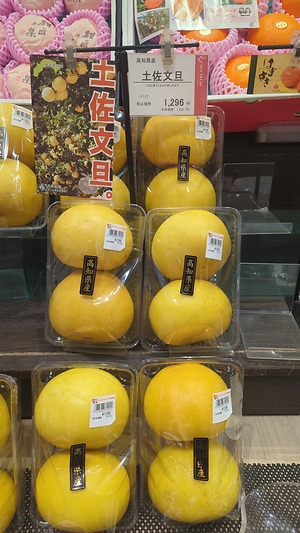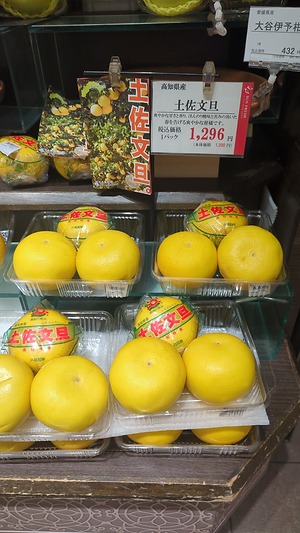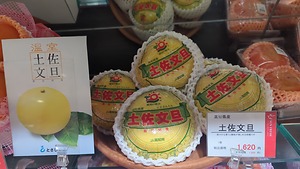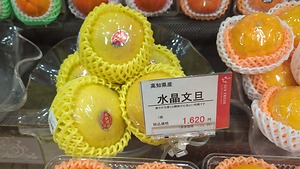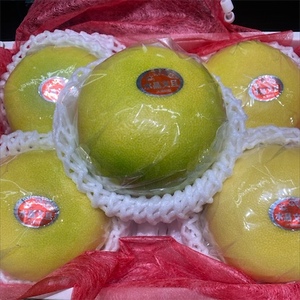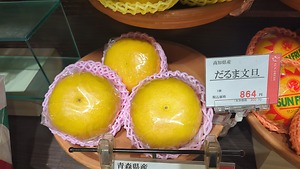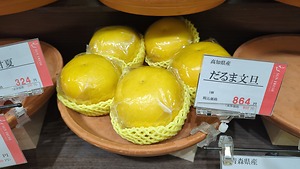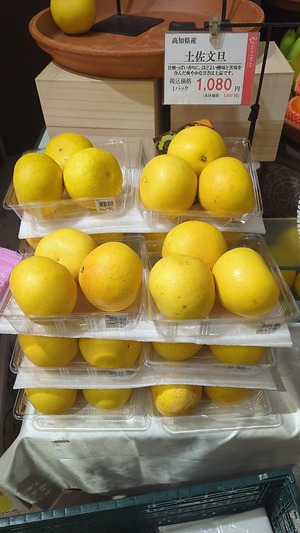

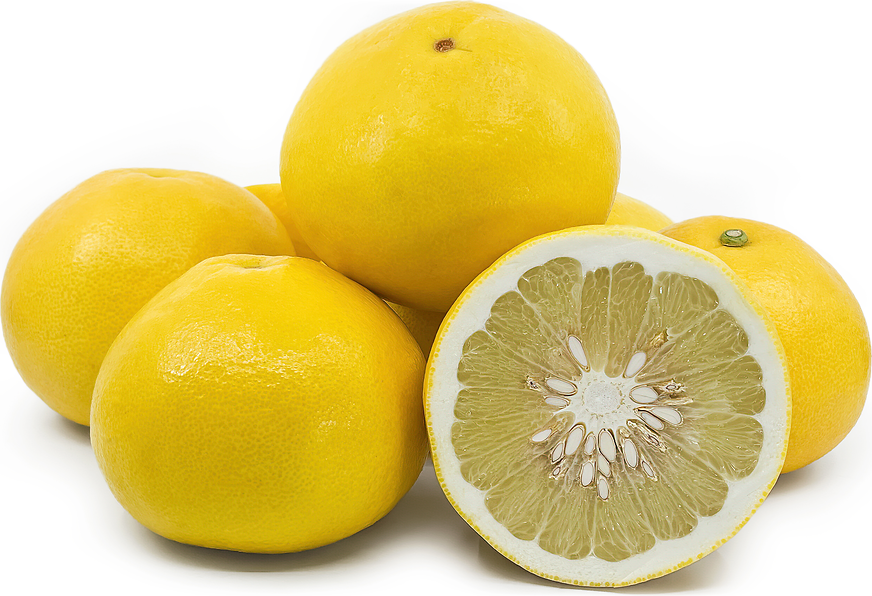
Buntan
Estimated Inventory, lb : 0
Description/Taste
Buntan can widely vary in size, generally averaging 15 to 25 centimeters in diameter, and has a globular, oblate, to sometimes flattened shape. The rind is thick, ripening from green to bright yellow when mature, and is firm, glossy, and semi-smooth, covered in small, bumpy pores that release aromatic essential oils. Underneath the surface, the flesh is textured, tightly adhered, aqueous, filled with many seeds, and pale green to yellow, divided into 8 to 16 segments by thin white membranes. Buntan is known for its balanced, sweet, and slightly bitter flavor with mild acidity and notes of umami.
Seasons/Availability
Buntan is harvested in the winter and can be stored through the early spring in Japan.
Current Facts
Buntan, botanically classified as Citrus maxima, is a large, sweet-tart fruit that belongs to the Rutaceae or citrus family. Japan is experiencing a citrus revival as entrepreneurs are venturing into the countryside to breathe life into abandoned orchards. With the farm to table trend increasing in popularity across the country, chefs and growers are partnering to create an organic channel of fresh citrus to infuse delicate, sweet-tart flavorings into healthy dishes. Japan is famously known for its yuzu, but Buntan has continued to become recognized as an equally useful fruit. There are over forty varieties of Buntan cultivated in Japan with varying histories, parent breeds, and flavors, with popular varieties including Crystal, Honda, Takaoka, Hirado, and Banpeiyu. Buntan is a general name for a combination of fruits that were created as natural mutations of pomelos and hybrid varieties of pomelos and yuzu. The fruits are also known as Bontan and Tosa-Buntan, with tosa being an old name for the Kochi prefecture. Ninety percent of all Buntan in Japan are produced in Kochi, and the prefecture is known for its extreme day to night temperatures, long hours of daylight, and fertile, sloped orchards creating a suitable environment for Buntan growth. Buntan is primarily consumed fresh for its sweet and mildly acidic flavor, and it is also popularly used across Japan for flavoring desserts and candies.
Nutritional Value
Buntan is an excellent source of vitamin C, which is an antioxidant that can help boost the immune system by protecting the body against external environmental aggressors. In Japan, the fruits are commonly consumed as a natural way to help protect against fatigue in the body and common colds. Buntan also contains smaller amounts of calcium, phosphorus, manganese, potassium, and zinc.
Applications
Buntan is best suited for raw applications as the sweet, acidic flesh is showcased when consumed fresh, out-of-hand. The peel of the fruit is very thick and should be first opened using a knife, followed by using a spoon or finger to work around the fruit to separate the flesh from the peel. Once the flesh is cleaned, it can be segmented and tossed into green and fruit salads, drizzled in chocolate as a sweet dessert, or mixed into noodle dishes, stir-fries, and lettuce wraps. Buntan is also frequently cooked into jams, jellies, and marmalade, pressed into juice for use in fruit beverages and cocktails, or used to flavor seafood, soups, vinaigrettes, and baked goods such as tarts, ice cream, cakes, and chocolate. In addition to the flesh, the rind can be peeled and used to make candied citrus or tea, and the thick rind also makes an aromatic bowl or cup to hold gelatins and custards. Buntan pairs well with ginger, scallions, chile peppers, cilantro, radish, seafood, poultry, honey, vanilla, peanuts, mango, papaya, avocado, and toasted coconut. The fruits will keep up to one week when stored in a cool, dry, and dark place. It can also be tightly wrapped in plastic and stored in the refrigerator.
Ethnic/Cultural Info
Buntan was featured in the new cookbook A Taste of Kochi Citrus, which is dedicated to the diverse citrus varieties grown in Kochi, Japan. The sixty-eight-page online recipe book was curated and created by chef Janice Wong, who is known for creating whimsical desserts at her eateries in Singapore, China, and Japan, and has a love for the delicate, sweet and bitter flavors of Japanese citrus. The book was also published by the Kochi Representative Office to help promote the unknown citrus varieties that are often overshadowed by yuzu. There are four main varieties mentioned in the book, including Buntan, yuzu, naoshichi, and konatsu, and chef Wong spent over three months experimenting with the varieties and interviewing farmers throughout Kochi to learn about the fruits. The cookbook was released in 2018 and features sweet desserts, aromatic sauces, and savory dishes to highlight the complexity of citrus flavors.
Geography/History
Buntan is believed to be a descendant of pomelos that are native to Southeast Asia, and the original pomelos were introduced to China, Thailand, and Taiwan during ancient times. Once introduced, the pomelos were widely cultivated in China, where they eventually developed into the Buntan varieties that are found in markets in the modern-day. The large fruits arrived in Japan sometime during the Edo period, with many myths and legends surrounding their journey to the island nation. Today there are many different varieties of Buntan that are commercially cultivated in the Kochi prefecture of Japan. Buntan can be found through local Japanese markets and specialty grocers, and the fruits are sometimes grown in home gardens.
Recipe Ideas
Recipes that include Buntan. One
| Michelin |
|
Citrusy Buntan Mantou |



